The Art of Bamboo:
Reimagining a Traditional Craft
Cathy Teng / photos Jimmy Lin / tr. by Brandon Yen
July 2022
00:00
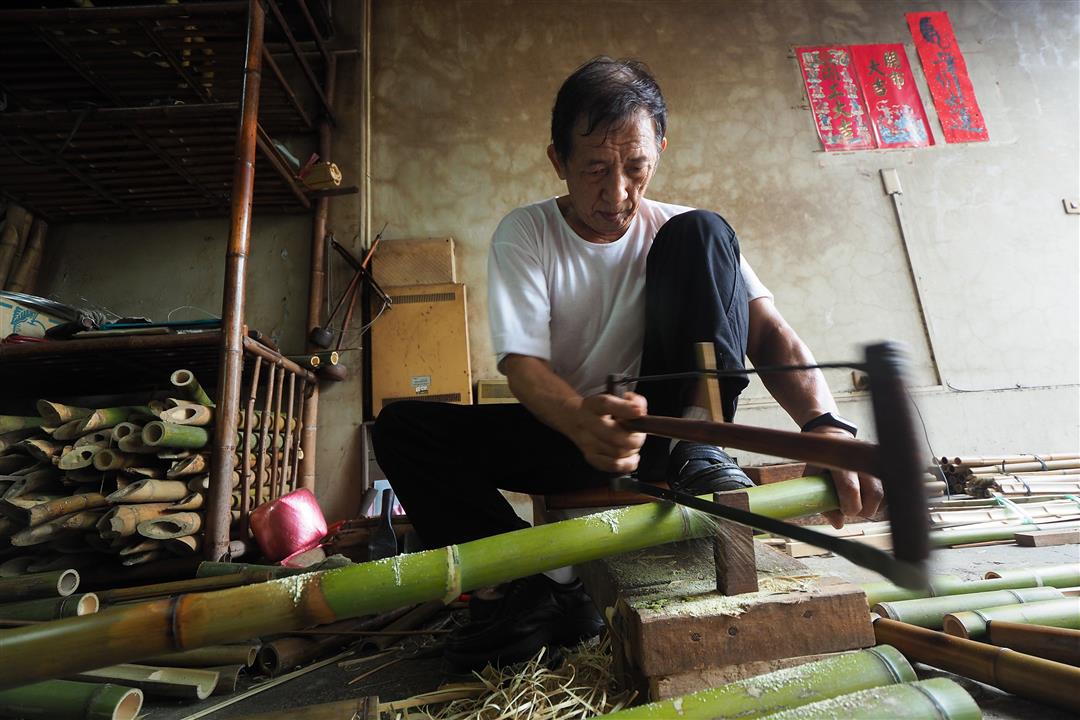
Some 85% of the world’s bamboo cover is located in Asia. This evergreen perennial occupies 6% of Taiwan’s total forest area. Our ancestors used to tap into the island’s rich bamboo resources for everyday purposes.
However, though some of us may still remember its glory days, bamboo has long since been replaced in our daily lives by new and more convenient materials. Nevertheless, the warm physicality of natural substances is irreplaceable. In addition, bamboo takes only three years to be ready for harvest, and its average carbon sequestration rate is four times that of timber trees. As we respond to the imperative issue of environmental sustainability, bamboo offers a new option for reducing our carbon footprint.
Xin’er Bamboo Shop
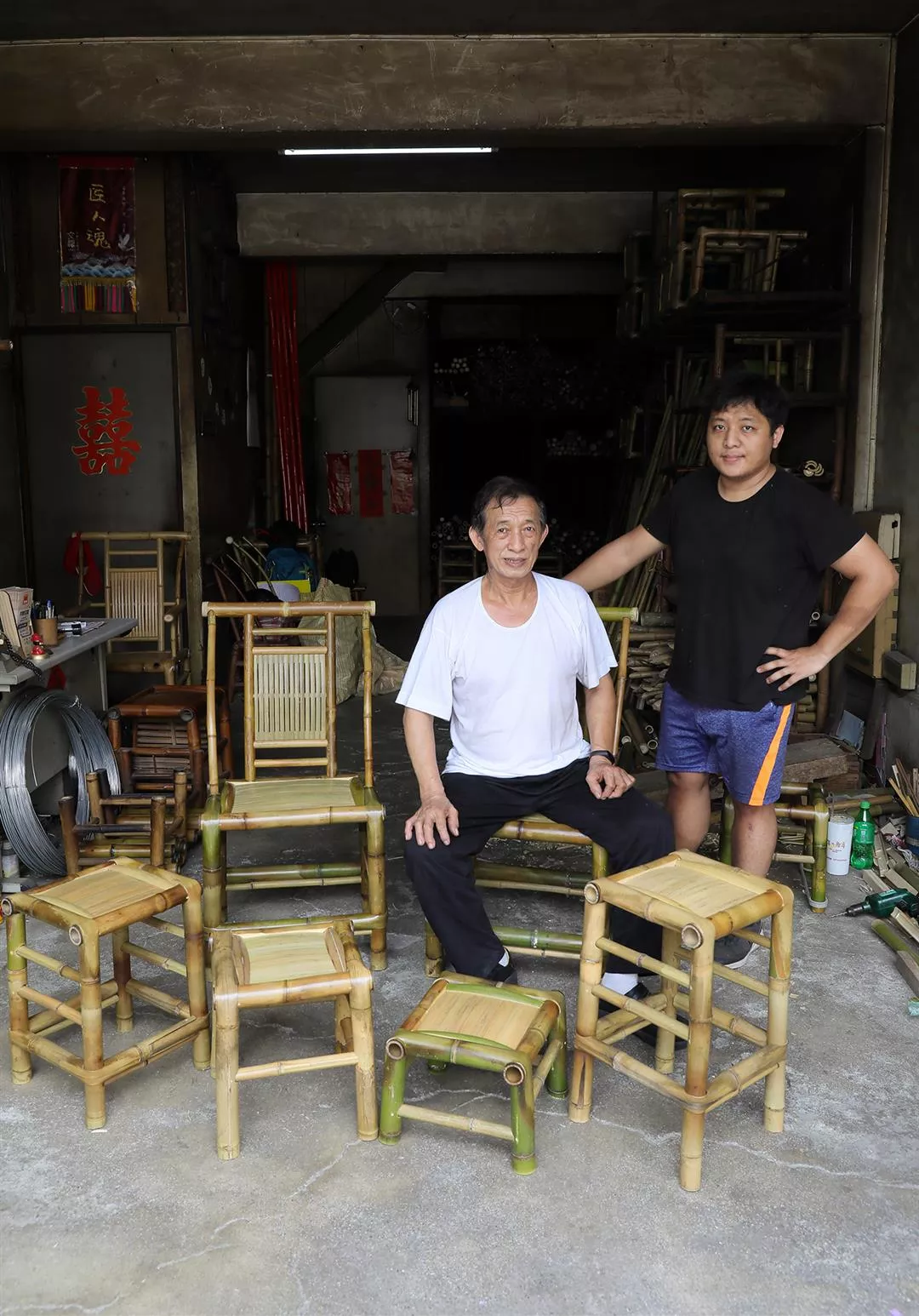
Thanks to Wang Jen-hui’s tenacity and his son Sheng-nan’s willingness to inherit the craft, we can still appreciate the beauty of bamboo furniture today.
Bamboo knowledge
Located in Tainan City’s North District, Xin’er Bamboo Shop is entering its fourth generation. Specializing in handmade bamboo furniture, it is the only shop in downtown Tainan that still makes furniture with traditional “wraparound” joints. Xin’er is now run by its third-generation owner, Wang Jen-hui.
Wang has a lot to say about bamboo and responds to our questions with enthusiasm. He uses three-year-old Makino bamboo (Phyllostachys makinoi) to make furniture: the fibers of younger bamboo aren’t hard enough, and older bamboo is more prone to splitting. When fresh bamboo arrives, Wang lets it dry indoors for 15 days, waiting until it becomes less moist before he starts using it to make products. His uncompromising attitude toward raw materials has helped ensure the quality of his work. After the Jiji Earthquake of 1999, many historic wooden buildings in Taiwan had to be repaired, and places such as the Lin Family Garden in Taichung’s Wufeng District and Longshan Temple in Changhua’s Lukang Township specified Wang’s bamboo nails. “It’s because I only use the three segments closest to the ground: they have the greatest hardness. I dry my bamboo nails for at least 15 days during the hot weather in June and July. Before use, the nails have to be soaked in hot oil for several hours to form a protective outer layer, which helps prevent decay.”
Why do we use bamboo nails, rather than wooden ones, in wooden structures? “Wood fibers can run lengthways or crossways, or be curved. Wooden nails easily break under stress. What about steel nails? They will eventually rust away because there will be some residual moisture in wood. But in bamboo nails the fibers run lengthways, and we use the hardest part of the stem, which means that the nails can take the stress of being hammered into a wooden structure. Handmade bamboo nails are purposely cut into a rectangular shape and slightly tapered. When jammed into a round hole, the four corners will fit tightly,” says Wang, unstintingly pouring out the knowledge he has distilled from more than 40 years of practical experience.
While talking to us, Wang sets about selecting long sections of bamboo stem in order to make a chair. He chooses sections with a node on either end “because these will make sturdy legs.” Cutting away the material from one side of some of their segments, he explains that these parts will be heated and bent. The curvature has to be just right so that they can be seamlessly joined with other pieces.
Off to one side, Wang’s son Sheng-nan lights a fire in a metal stove, and holds over it a section of bamboo from which one side has been cut away. “Bamboo becomes soft when heated, which lets us bend it to the right angle,” he says. When he feels the bamboo softening, he picks up a short length of bamboo and quickly and skillfully bends the softened bamboo around it. His father then uses a rope to fasten this chair leg at the correct angle.
Father and son work methodically together, dividing their work between them, just as their craft has been passed down from one generation to the next.
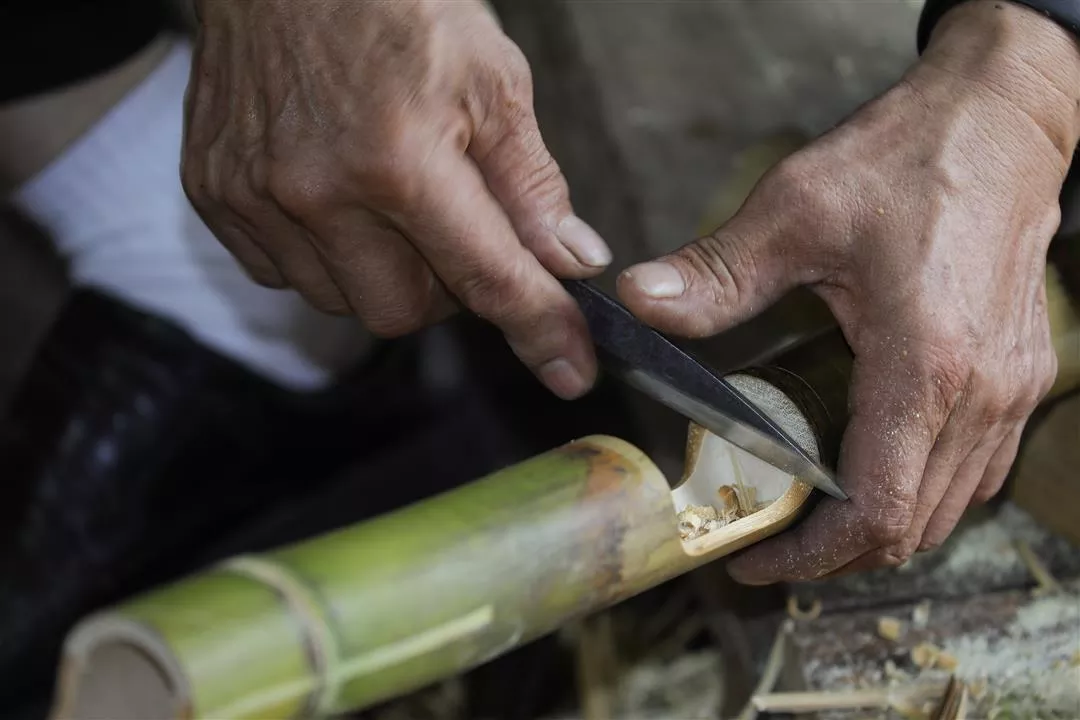
Xin’er Bamboo Shop uses traditional “wraparound” joints in its furniture. The process involves cutting away one side of the bamboo, heating the cutaway section, and bending it.
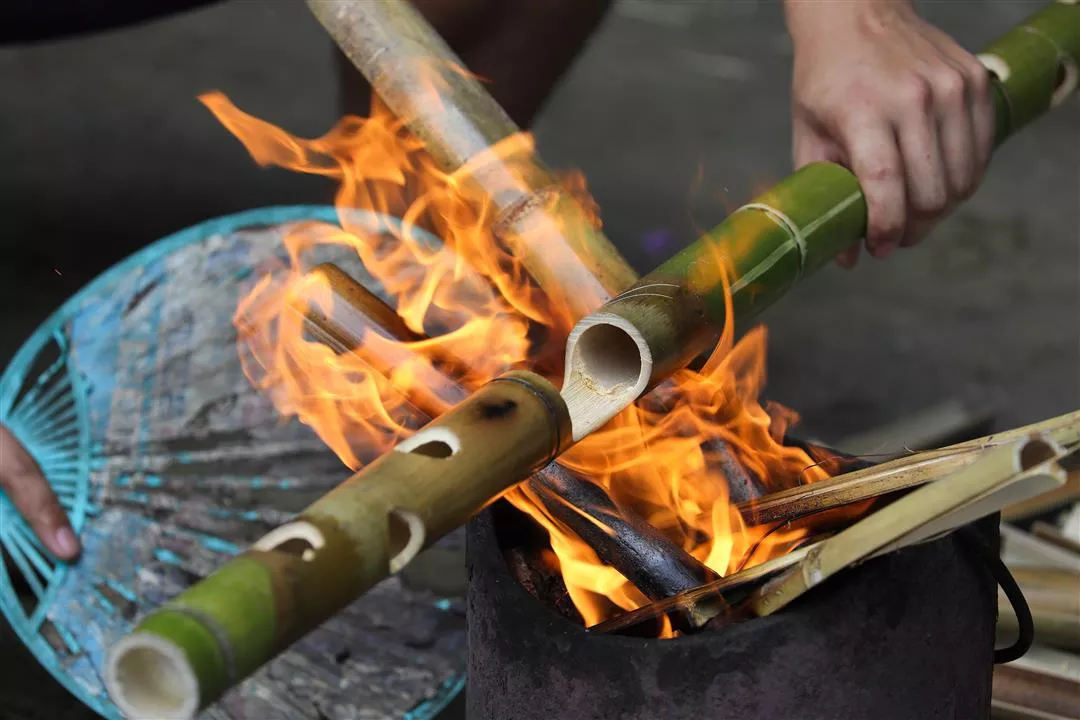
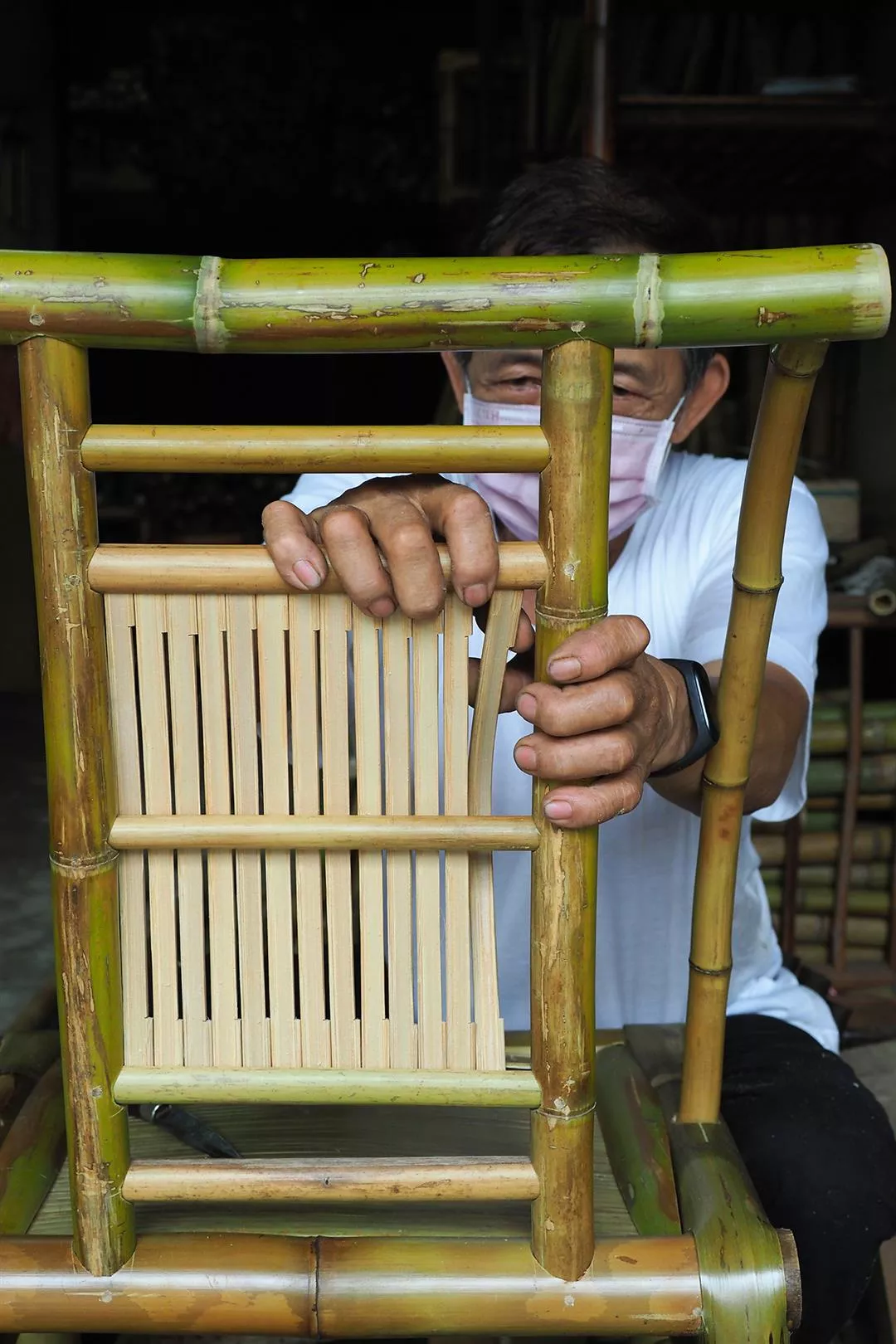
Wang Jen-hui has steered his bamboo business through challenging times over the course of 46 years, sometimes changing tack, but never switching to a different trade.
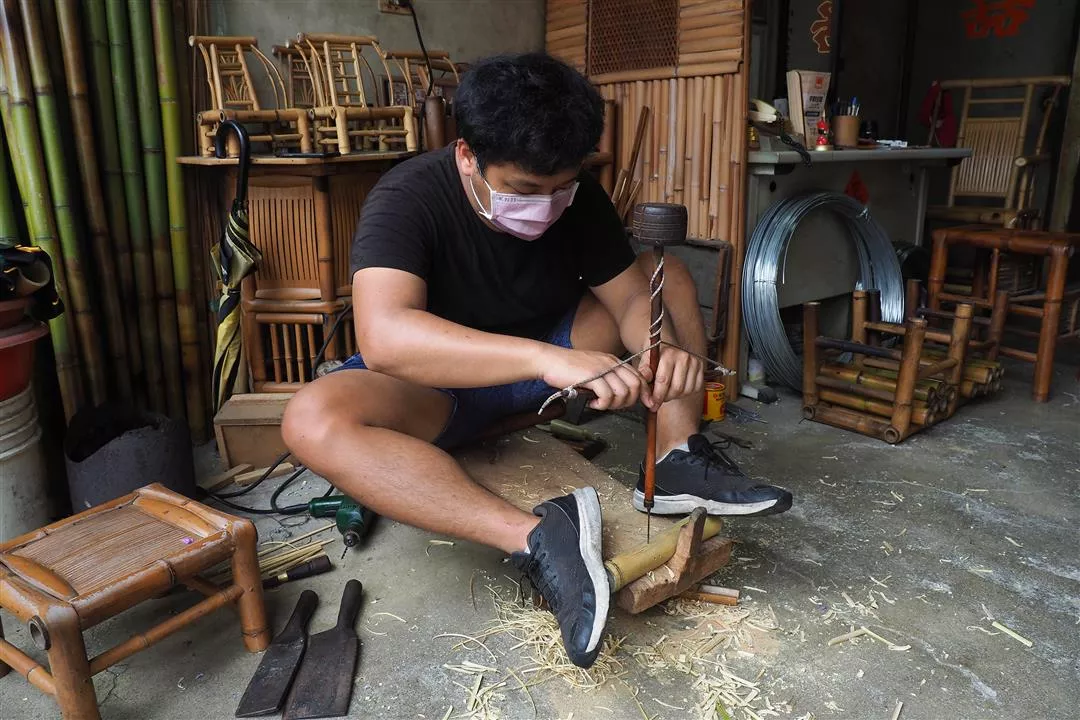
Wang Sheng-nan demonstrates how to use a century-old drill to make holes.
Transformations
The Wang family’s skills can be traced back to Jen-hui’s paternal grandfather, Wang Chuan-bao, who honed his craft in Japan. After returning to Taiwan, Chuan-bao established a bamboo products shop called Futai in 1907. Thanks to his fine craftsmanship, many Japanese customers came for bespoke furniture. Jen-hui’s father, Huo-yao, focused on constructing bamboo buildings.
Wang Jen-hui says that Taiwan’s bamboo industry flourished during the Japanese period. There was even a “bamboo street” in downtown Tainan. People of his father’s generation witnessed that golden age. When Wang, aged 16, took over the family business in 1976, he never guessed that the very next year, plastic furniture would come onto the market. The bamboo furniture shops were all but wiped out.
“I chose to stay in the bamboo business, but to change tack,” Wang says with pride. During the first transformation, he began to make bamboo structures for florists, as well as various shop fronts and decorated archways. It was an age of rapid economic growth in Taiwan, and people were increasingly choosy about decorations for special occasions such as weddings and funerals. Wang’s flower stands, which absorbed elements of Southern Min and Baroque architecture, were very popular. However, in the 1990s, he shifted his focus to designing and making bamboo structures for flower shows.
After 2010, Wang’s business underwent a third transformation, this time returning to its original area of expertise: bamboo furniture. At that time, there was also a rekindled public interest in religious festivals and parades. Drawing on his childhood memories, Wang produced traditional religious contraptions such as ornate drum stands and hexagonal stands for flowers and incense burners, mounted on carrying poles. With more and more people in Taiwan going on pilgrimages, there have also been customers ordering bespoke shoulder carriers to transport their gods and goddesses.
Wang Sheng-nan, who originally trained as a computer engineer, completed his bamboo craft apprenticeship in 2014. Since then, as a young “slashie,” he has been working in IT and as a bamboo artist, helping his father out during holidays, and managing a Facebook page for the family’s century-old shop. He adds a creative touch to the traditional craft he has inherited, developing collectable products such as mini bamboo chairs, which are popular with tourists from Japan and Hong Kong.
If Xin’er is more than 100 years old, how long will its bamboo chairs last? Pointing at a stool in one corner, Wang Jen-hui tells us: “That one has lasted 30 years. It’s a bit wobbly, but otherwise it’s fine. I deliberately haven’t repaired it, just to show it to my customers.” Underlying his words is a craftsman’s confidence, and the enormous potential of bamboo furniture.
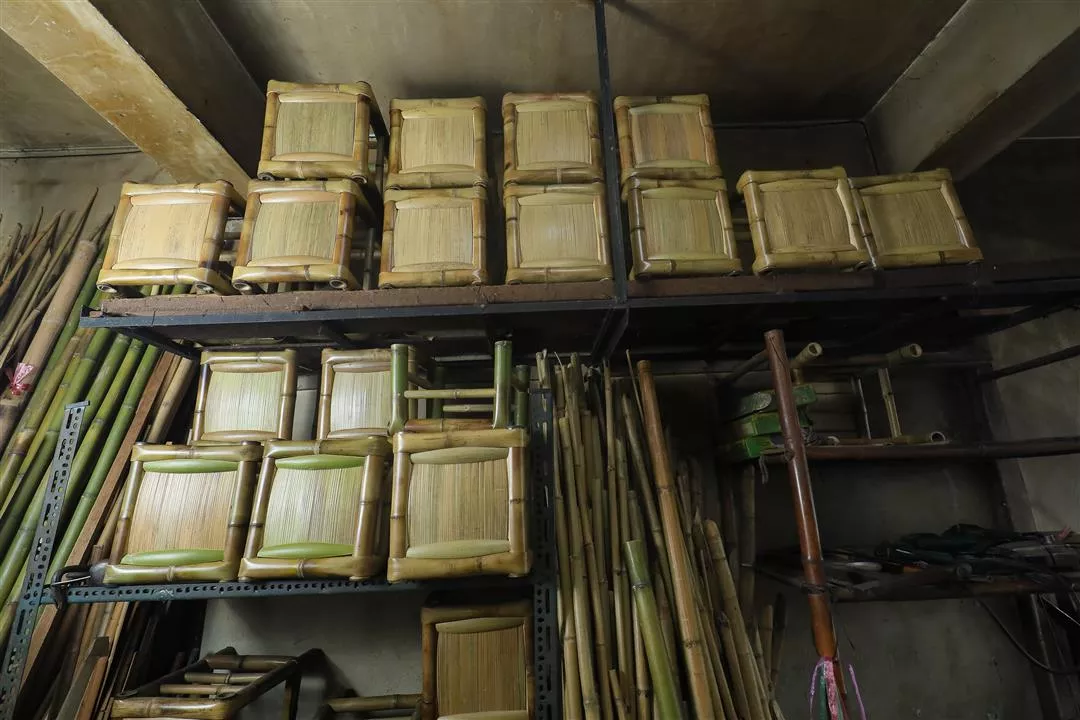
From simple stools to pilgrims’ shoulder carriers, bamboo products continue to cast a spell on us in the modern age.
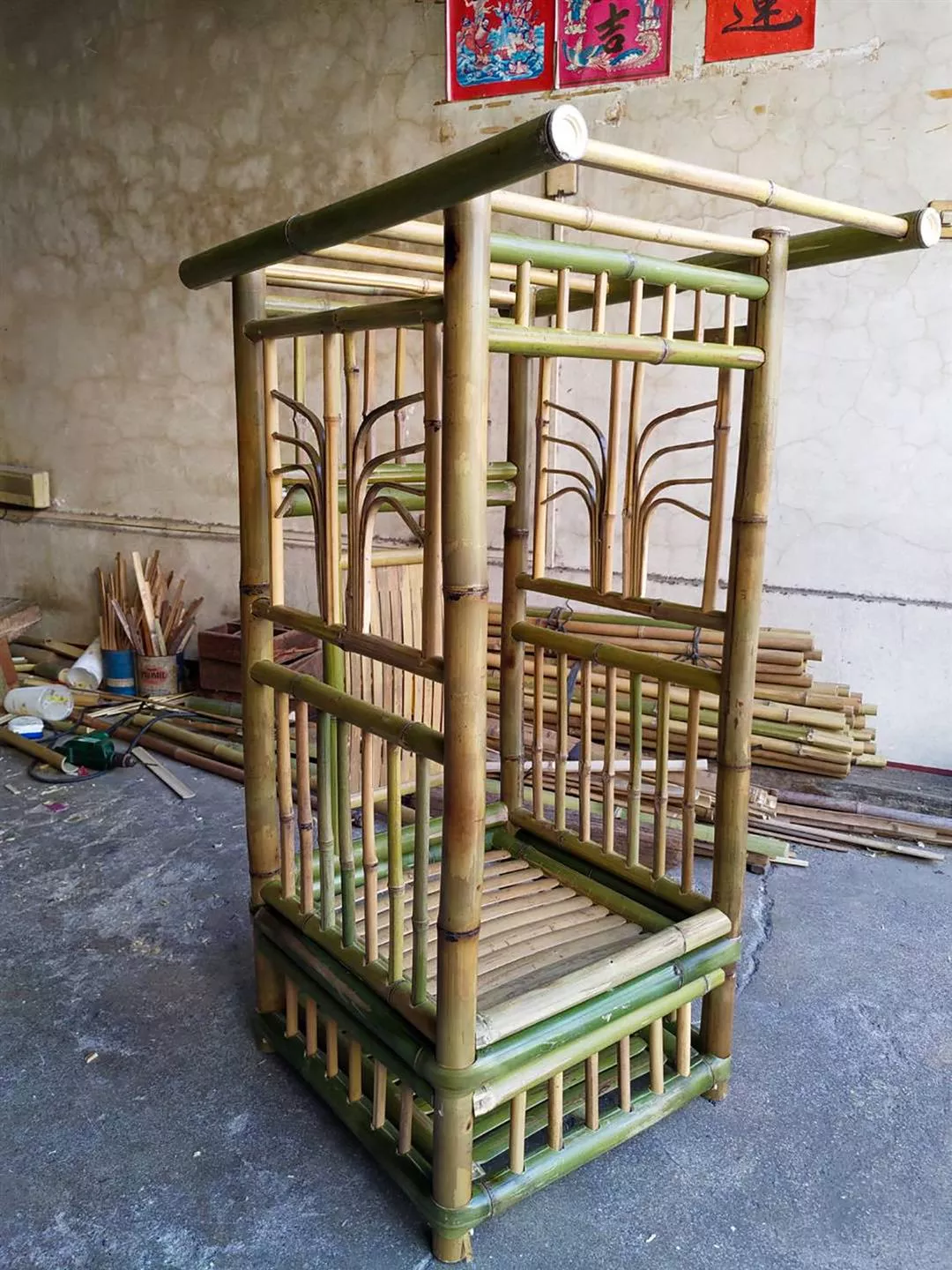
courtesy of Xin’er Bamboo Shop
Gridesign Studio
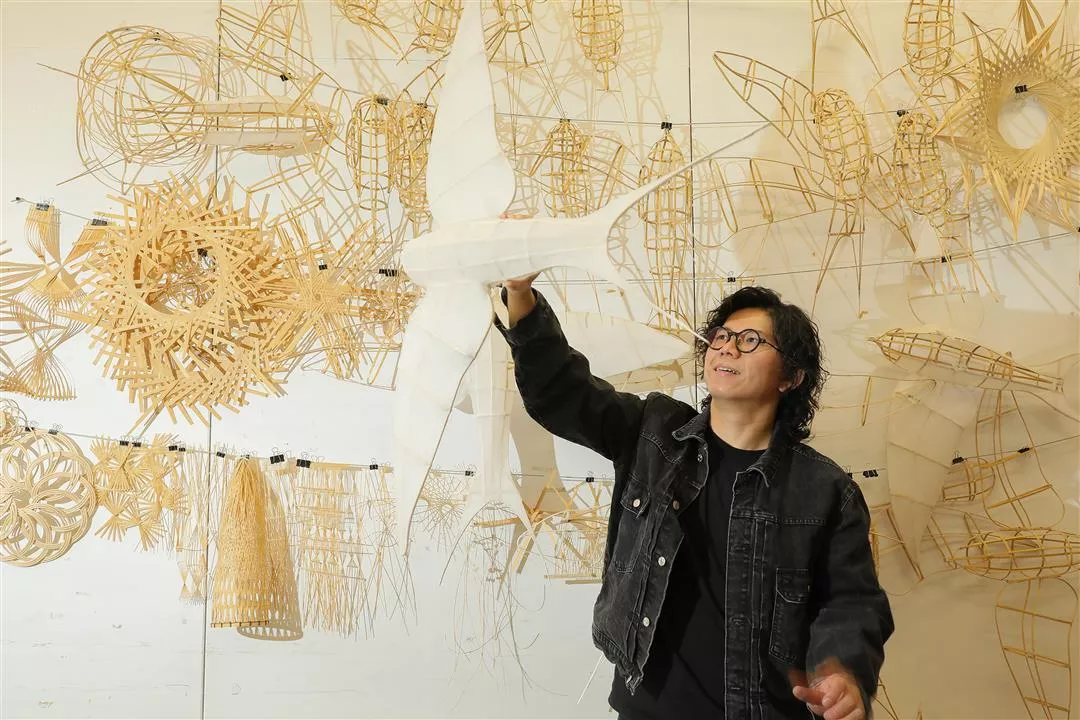
Lin Ching-ke has been exploring the infinite possibilities of
bamboo.
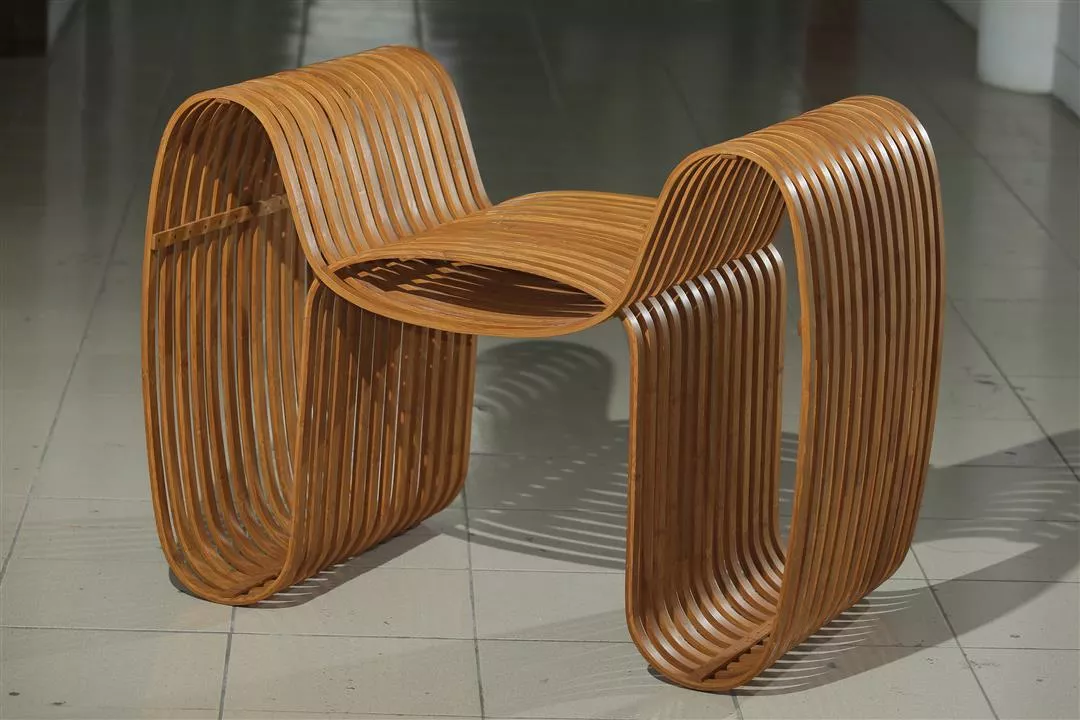
Lin’s Bow Tie Chair is made up of 13 bowtie-shaped bamboo loops. The simple shape belies the craftsman’s fine skills.
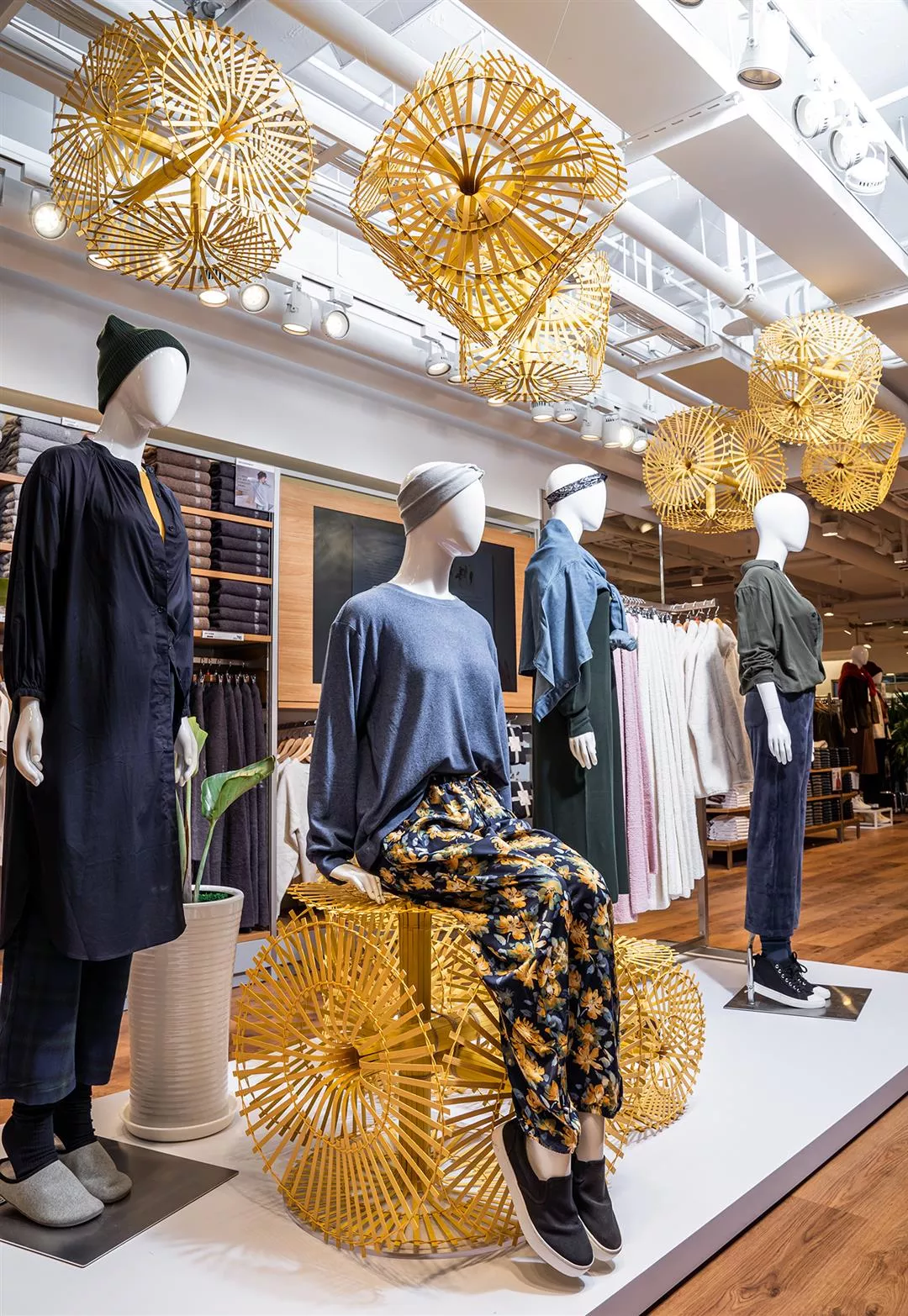
Lin was invited to exhibit his Firecrackers at the opening of Uniqlo’s Taipei flagship store. These installations show us how bamboo may play a part in modern art. (courtesy of Lin Ching-ke)
Reimagining bamboo
When he first came into contact with bamboo, Lin Ching-ke was already an experienced designer. While taking a course for working professionals, he was introduced to this natural material through “New Fun in Crafts,” a project hosted by the National Taiwan Craft Research and Development Institute. He was immediately spellbound. “Bamboo is a material that shares affinities with both grass and wood. It can be woven like grass, and made into baskets. But it also functions like wood, so people make furniture out of it and create architectural structures. As a building material, bamboo is remarkably versatile. It’s fascinating to see how bamboo lends itself to all these different uses,” Lin says.
In 2015 Lin established his brand, Gridesign Studio. “Bamboo as a raw material actually has a lot of potential. But how do we make it relevant to modern life? This is something for designers to work out.”
“At first I spent a good deal of time playing around with bamboo. Through this process, I came up with many different ideas and thoughts,” Lin tells us. The natural traits and propensities of a material will affect how we process it and how we use it. His Joint Plates—a series of differently shaped trays and baskets—take advantage of the hollowness of bamboo stems. Cutting the ends of the stems into weavable strips, he creates intriguing configurations of woven vessels supported by upright bamboo posts.
It was with his Bow Tie Chair that Lin shot to fame. By combining the shape of a bowtie with the texture of bamboo, this work forges “a dialogue between the Western gentleman and his Eastern counterpart.” The chair is composed of simple wavy lines in the shape of a bowtie. But how exactly was this achieved? In collaboration with craftsmen, Lin turned his back on the shapes of traditional bamboo chairs, as well as on conventional methods. Opting instead for lamination techniques, the team heated and bent long bamboo strips into 13 bowtie shapes before joining them together to form the chair. They were able to accomplish this because the fibers in bamboo all run lengthways along the stem. This project worked the material to the limit, testing and fully displaying the toughness and flexibility of bamboo. Lin says he sought to marry craftsmanship with the inherent character of bamboo, and thereby give birth to his artwork in a natural way.
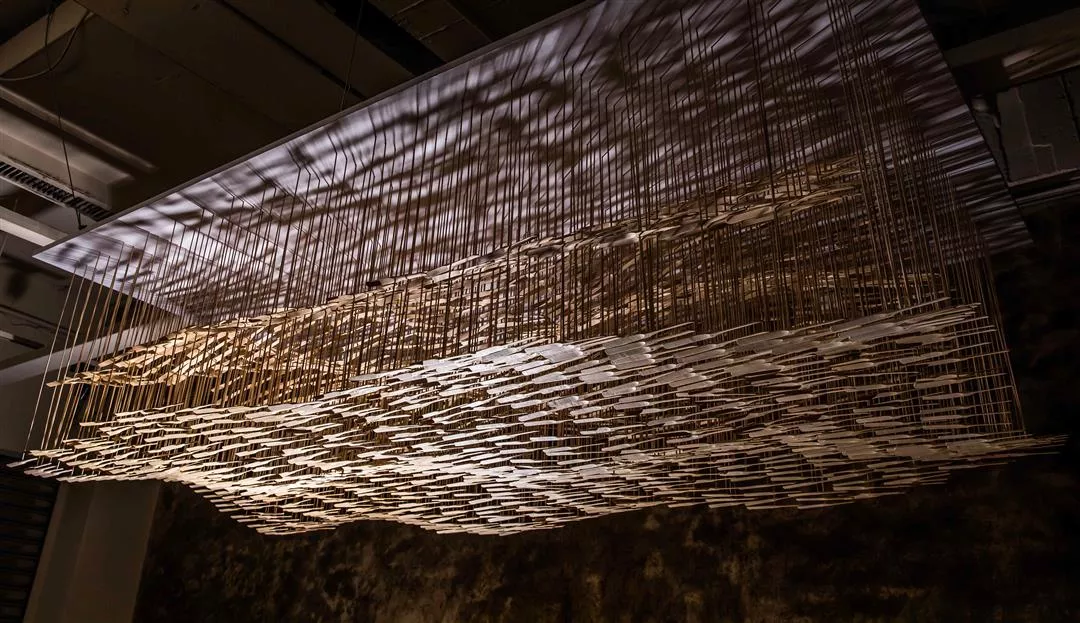
Composed of 1,378 bamboo-copters, When Mountains Meet the Ocean conjures up the contours of mountain ridges and sea waves by placing the bamboo blades along undulating lines. (courtesy of Lin Ching-ke)
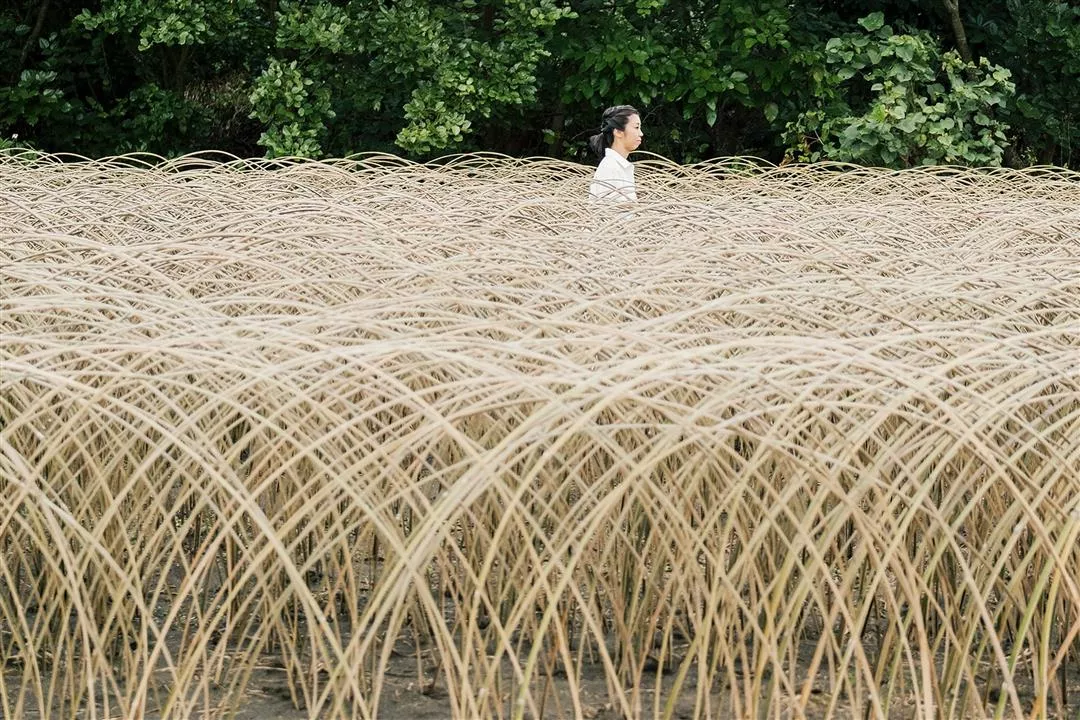
The Season of the Wind comprises arched strips of bamboo, evoking a land shaped by the northeast monsoon, as well as the movements of air itself. (courtesy of Lin Ching-ke)
Bringing out cultural meanings
Lin wants his creative work to reflect the cultural meanings and community memories associated with bamboo.
His When Mountains Meet the Ocean is installed in Mata Tea House near Taipei City’s Yongkang Park. Inspired by the familiar bamboo-copter toy, the work bears witness to Lin’s childlike ingenuity. Its basic element—a T-shaped bamboo-copter made of a stick and a rotor blade—could not be simpler, but Lin employs his fertile imagination and industrial design techniques to assemble as many as 1,378 bamboo-copters. He hung extra-long sticks from the ceiling and then used a computer to calculate the different heights and angles at which he wanted to attach the blades, thus creating the spectacle of a vast number of bamboo-copters flying at different levels in the air. Looking at the work from the side, we see the blades of the bamboo-copters forming two sets of undulating lines: the upper section evokes the contours of mountains, the lower, sea waves. These shapes bring to mind the characteristic scenery of the teahouse owner’s home county, Taitung.
“Bamboo is considered to be something traditional, and its potential is often circumscribed by an inflexible adherence to traditional craft techniques. But actually there are diverse ways to utilize bamboo. By bringing ideas of industrial design into this traditional industry, I’m hoping to help it break new ground,” Lin says.
Fireworks is another project of Lin’s that tells Taiwan’s stories through bamboo. Prompted by a Chinese saying—“the sound of firecrackers sees out the old year”—Lin cut several thin strips down one end of a bamboo stem along the direction of its fibers, heated the strips, and bent them outwards so that the whole resembled a parasol. By combining several of these together, he conjured up a beautiful vision of fireworks and firecrackers, reminding us that bamboo, which makes explosive sounds when burned, is thought to be the predecessor of firecrackers: one of the Chinese words for “firecracker‘’ literally means “exploding bamboo.”
Looking closely at Lin’s works, we notice that they’re always intricate and decorative. The fine details often contain interesting insights that are not necessarily yoked to the physical material. “I’m applying craft methods to installation art,” Lin says. Lin’s Thank You Bouquet, displayed in Daan Park in Taipei City last year, was made up of 180 woven bamboo flowers, each of which was different. This was his creative mind giving new life to the traditional craft of bamboo weaving.
In recent years, Lin Ching-ke has gone beyond the product design that was the mainstay of his earlier career to embrace installation art and land art. “Large-scale creative work can reach a wider audience. I hope to introduce more people to the beauty of bamboo.”
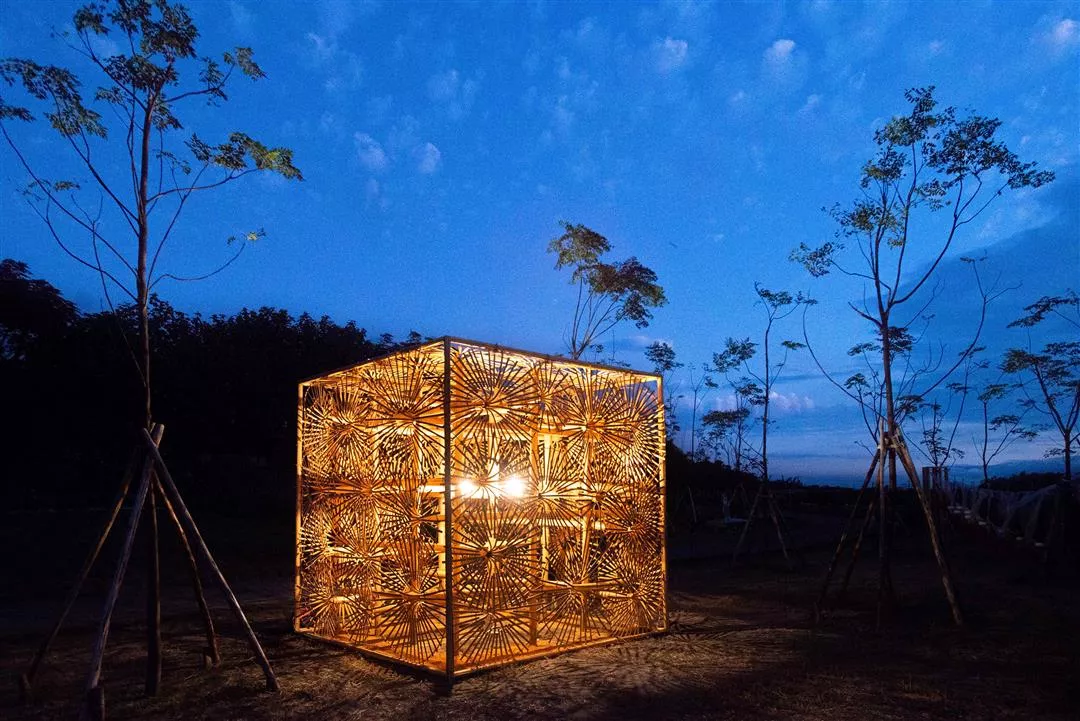
To create Fireworks, Lin drew on the cultural associations of bamboo, assembling numerous parasol-shaped arrangements of bamboo strips that depict exploding firecrackers. The viewer can almost hear the detonations. (courtesy of Lin Ching-ke)

@List.jpg?w=522&h=410&mode=crop&format=webp&quality=80)

@List.jpg?w=522&h=410&mode=crop&format=webp&quality=80)


